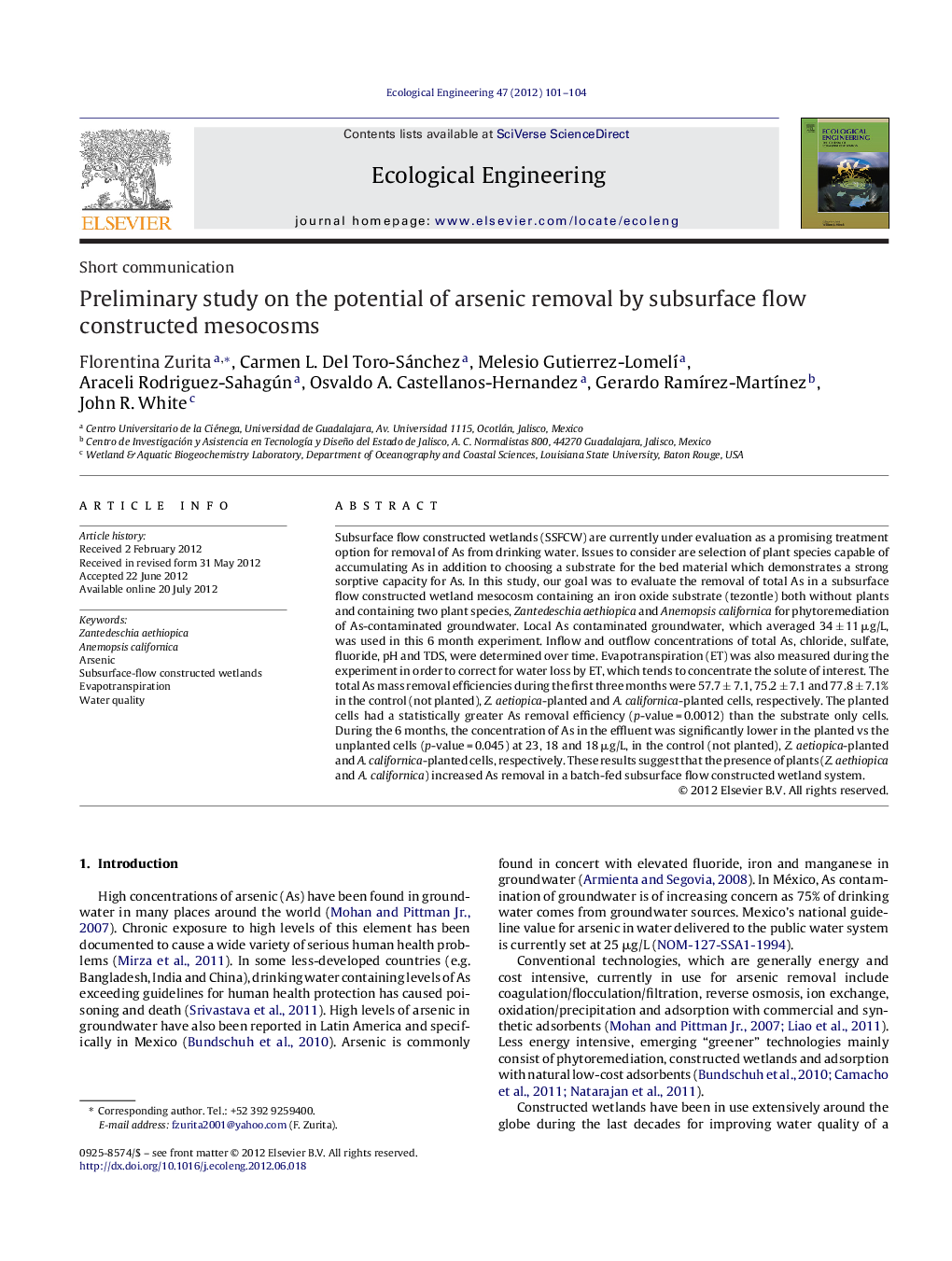| Article ID | Journal | Published Year | Pages | File Type |
|---|---|---|---|---|
| 4390005 | Ecological Engineering | 2012 | 4 Pages |
Subsurface flow constructed wetlands (SSFCW) are currently under evaluation as a promising treatment option for removal of As from drinking water. Issues to consider are selection of plant species capable of accumulating As in addition to choosing a substrate for the bed material which demonstrates a strong sorptive capacity for As. In this study, our goal was to evaluate the removal of total As in a subsurface flow constructed wetland mesocosm containing an iron oxide substrate (tezontle) both without plants and containing two plant species, Zantedeschia aethiopica and Anemopsis californica for phytoremediation of As-contaminated groundwater. Local As contaminated groundwater, which averaged 34 ± 11 μg/L, was used in this 6 month experiment. Inflow and outflow concentrations of total As, chloride, sulfate, fluoride, pH and TDS, were determined over time. Evapotranspiration (ET) was also measured during the experiment in order to correct for water loss by ET, which tends to concentrate the solute of interest. The total As mass removal efficiencies during the first three months were 57.7 ± 7.1, 75.2 ± 7.1 and 77.8 ± 7.1% in the control (not planted), Z. aetiopica-planted and A. californica-planted cells, respectively. The planted cells had a statistically greater As removal efficiency (p-value = 0.0012) than the substrate only cells. During the 6 months, the concentration of As in the effluent was significantly lower in the planted vs the unplanted cells (p-value = 0.045) at 23, 18 and 18 μg/L, in the control (not planted), Z. aetiopica-planted and A. californica-planted cells, respectively. These results suggest that the presence of plants (Z. aethiopica and A. californica) increased As removal in a batch-fed subsurface flow constructed wetland system.
